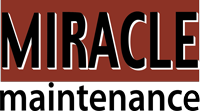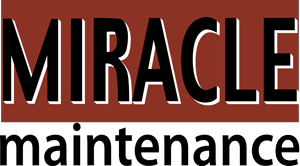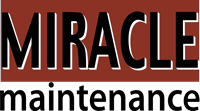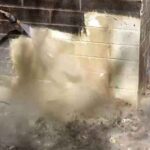TopMiracle Maintenance Log Cabin Restoration: Corn Cob Blasting ExpertsBlog
LOG CABIN RESTORATION
Whether your log home is a vacation rental, a weekend getaway, or a permanent residence, you know that removing the grime, mold and dirt accumulated over the years can restore your beloved home to like-new status and preserve it for the future.
We use corn cob blasting to remove this accumulation, and the results are spectacular. We are methodical in our preparation, our application, and know that missing or partially completing any of these steps is critical to the success of our job.
When we come to your cabin for the free estimate, we will explain every step that needs to be done. We will give you a detailed cost breakdown, and tell you exactly how long it will take to complete the job. We want your business, and we want you to tell your friends about us.
Observe the difference corn cob blasting can do to eliminate years of grime and dirt, enabling the homeowner to restore the cabin to its original beauty.
log house, log home repair and restoration, home repair, accessibility, wood, environmentally friendly, general contractor, stain, insect, termite, mildew, warranty, construction, expert, pressure washing, water, lumber, restoration, home restoration, services log, free estimate, restoration services, free consultation, experience, fungus, renovation, cob, borate, paint, infestation, moisture, timber framing, maintenance, energy, mold, pressure, log cabin restoration near me, log cabin maintenance near me, log restoration, caulk, dust, bleach, sealant, dirt, pollen, washing, liquid, interior, exterior, maintenance services, roof, coat, garden hose, climate, cleaner, sprayer, oxalic acid, water damage, heat, aesthetics, longevity, plumbing, infiltration, walnut, pennsylvania, cabin restoration, log cabin repair, logs, blasting, log home maintenance, security, log cabin maintenance, log home restoration, continue, log cabin restoration
Frequently Asked Questions
What is the cost of log home restoration?
The cost of log home restoration varies based on factors such as the size of the home, the extent of restoration needed, and the methods used. For a detailed estimate, we recommend contacting Miracle Maintenance for a free consultation.
What is the cost of log cabin cleaning services?
The cost of log cabin cleaning services varies based on the size and condition of your cabin. Miracle Maintenance offers competitive pricing and provides free estimates to help you understand the total cost before beginning the restoration process.
What are common log cabin restoration mistakes?
Common log cabin restoration mistakes include inadequate surface preparation, using the wrong cleaning methods, neglecting to address moisture issues, and failing to apply protective finishes properly. These errors can lead to further damage and costly repairs.
How long does log cabin restoration take?
The duration of log cabin restoration varies based on the size and condition of the cabin. Typically, the process can take anywhere from a few days to several weeks, depending on the extent of the work required.
What are the benefits of log home restoration?
The benefits of log home restoration include enhanced aesthetic appeal, increased property value, and improved durability against environmental factors. Restoration methods, like corn cob blasting, effectively remove dirt and grime, ensuring your log home remains beautiful and well-preserved.
What materials are used for log cabin restoration?
The materials used for log cabin restoration include eco-friendly cleaning agents, sealants, and preservatives specifically designed for wood. Additionally, tools like corn cob blasting media are employed to effectively remove dirt and grime from the logs.
What are the steps involved in log cabin restoration?
The steps involved in log cabin restoration include an initial assessment, thorough cleaning using methods like corn cob blasting, repairing any damaged logs, applying protective treatments, and finally, ensuring proper maintenance for long-lasting results.
What are common issues in log home repair and restoration?
Common issues in log home repair and restoration include wood rot, insect infestations, and water damage. Additionally, improper sealing and maintenance can lead to significant deterioration, making timely restoration essential for preserving the integrity of your log home.
How to repair cracked logs in log homes?
Repairing cracked logs in log homes involves cleaning the affected area, applying a wood filler or epoxy designed for log restoration, and ensuring proper sealing to prevent future moisture intrusion. Regular maintenance can help minimize further damage.
How do you assess log cabin damage before restoration?
Assessing log cabin damage before restoration involves a thorough inspection of the logs, checking for signs of rot, insect infestation, and structural integrity. We evaluate the extent of damage to determine the appropriate restoration methods needed.
What factors influence log home restoration costs?
The factors that influence log home restoration costs include the size and condition of the cabin, the restoration methods used, the materials required, and the complexity of the project.
How can I prevent log cabin damage?
Preventing log cabin damage involves regular maintenance, including cleaning to remove dirt and mildew, applying protective sealants, and ensuring proper drainage around the foundation. Regular inspections can also help identify and address issues early.
What is the best time for restoration?
The best time for log cabin restoration is during mild weather, typically in spring or early fall. This ensures optimal conditions for cleaning and preserving the wood, allowing for effective treatment and drying.
How to choose restoration materials for log cabins?
Choosing restoration materials for log cabins involves selecting options that are durable, weather-resistant, and compatible with the existing wood. Prioritize natural materials like stains and sealants that enhance the cabin's aesthetics while providing long-lasting protection.
What are signs of log cabin deterioration?
The signs of log cabin deterioration include visible cracks or splits in the logs, discoloration or fading of the wood, presence of mold or mildew, insect infestations, and excessive moisture buildup. Addressing these issues promptly is crucial for preservation.
How often should log cabins be maintained?
Log cabins should be maintained regularly, ideally every 1 to 3 years, depending on factors like weather conditions and wood type. Regular maintenance helps preserve the integrity and appearance of the cabin, ensuring its longevity.
What techniques are used in log cabin restoration?
The techniques used in log cabin restoration include corn cob blasting for effective cleaning, sanding to smooth surfaces, and applying protective finishes to preserve the wood. These methods ensure a thorough restoration while maintaining the cabin's natural beauty.
How to find a reliable restoration contractor?
Finding a reliable restoration contractor involves researching their credentials, reading customer reviews, and requesting references. Ensure they have experience in log cabin restoration and offer a clear estimate and timeline for the project.
What is the average timeline for log cabin cleaning?
The average timeline for log cabin cleaning typically ranges from one to three days, depending on the size and condition of the cabin. This timeframe allows for thorough cleaning and preparation for restoration.
What are the risks of DIY log restoration?
The risks of DIY log restoration include potential damage to the wood, improper cleaning techniques, and inadequate sealing, which can lead to moisture intrusion and further deterioration. Professional services ensure thorough restoration and preservation of your log home.
How to maintain log cabin aesthetics after restoration?
Maintaining log cabin aesthetics after restoration involves regular cleaning, applying protective finishes, and inspecting for damage. Use gentle cleaning methods and ensure timely maintenance to preserve the beauty and integrity of your log home.
What tools are essential for log home repair?
The essential tools for log home repair include a log splitter, chainsaw, chisel set, drill, and a moisture meter. These tools facilitate effective restoration, ensuring proper maintenance and longevity of your log home.
How to treat insect damage in log cabins?
Treating insect damage in log cabins involves identifying the type of insect, removing infested wood, and applying insecticides or natural treatments. Regular inspections and preventive measures, such as sealing cracks, can help protect your cabin from future infestations.
What is the process for log cabin disinfection?
The process for log cabin disinfection involves thoroughly cleaning the surfaces to remove dirt and contaminants, followed by applying specialized disinfectants that are safe for wood. This ensures a hygienic environment while preserving the integrity of the logs.
How to enhance energy efficiency in log homes?
Enhancing energy efficiency in log homes involves improving insulation, sealing gaps, and using energy-efficient windows and doors. Regular maintenance, such as cleaning and restoring logs, also plays a crucial role in maintaining optimal energy performance.
What are the environmental impacts of log restoration?
The environmental impacts of log restoration include promoting sustainability by preserving existing wood structures, reducing waste, and minimizing the need for new materials. Eco-friendly methods, like corn cob blasting, further limit harmful chemicals and protect surrounding ecosystems.
How to properly seal log cabin exteriors?
Properly sealing log cabin exteriors involves cleaning the logs thoroughly, applying a high-quality sealant designed for log homes, and ensuring even coverage to protect against moisture and UV damage. Regular maintenance is essential for longevity.
What are the benefits of professional log cleaning?
The benefits of professional log cleaning include enhanced preservation of your log home, improved aesthetic appeal, and prevention of damage from mold and decay. Professional services ensure thorough cleaning using effective methods like corn cob blasting, promoting longevity for your cabin.
How to identify structural issues in log homes?
Identifying structural issues in log homes involves inspecting for signs of rot, cracks, or insect damage, checking for uneven settling, and assessing the integrity of the logs and joints. Regular maintenance and professional evaluations are essential for early detection.
What is the role of insulation in log cabins?
The role of insulation in log cabins is essential for maintaining energy efficiency. It helps regulate indoor temperatures, reduces heating and cooling costs, and prevents moisture buildup, ensuring a comfortable living environment year-round.
log home repair and restoration, log cabin cleaning services, log cabin restoration, cobborate, log home maintenance and restoration, log home restoration washington, corn cob blasting near me
log house, log home repair and restoration, home repair, accessibility, wood, environmentally friendly, general contractor, stain, insect, termite, mildew, warranty, construction, expert, pressure washing, water, lumber, restoration, home restoration, services log, free estimate, restoration services, free consultation, experience, fungus, renovation, cob, borate, paint, infestation, moisture, timber framing, maintenance, energy, mold, pressure, log cabin restoration near me, log cabin maintenance near me, log restoration, caulk, dust, bleach, sealant, dirt, pollen, washing, liquid, interior, exterior, maintenance services, roof, coat, garden hose, climate, cleaner, sprayer, oxalic acid, water damage, heat, aesthetics, longevity, plumbing, infiltration, walnut, pennsylvania, cabin restoration, log cabin repair, logs, blasting, log home maintenance, security, log cabin maintenance, log home restoration, continue, log cabin restoration
Frequently Asked Questions
What is the cost of log home restoration?
The cost of log home restoration varies based on factors such as the size of the home, the extent of restoration needed, and the methods used. For a detailed estimate, we recommend contacting Miracle Maintenance for a free consultation.
What is the cost of log cabin cleaning services?
The cost of log cabin cleaning services varies based on the size and condition of your cabin. Miracle Maintenance offers competitive pricing and provides free estimates to help you understand the total cost before beginning the restoration process.
What are common log cabin restoration mistakes?
Common log cabin restoration mistakes include inadequate surface preparation, using the wrong cleaning methods, neglecting to address moisture issues, and failing to apply protective finishes properly. These errors can lead to further damage and costly repairs.
How long does log cabin restoration take?
The duration of log cabin restoration varies based on the size and condition of the cabin. Typically, the process can take anywhere from a few days to several weeks, depending on the extent of the work required.
What are the benefits of log home restoration?
The benefits of log home restoration include enhanced aesthetic appeal, increased property value, and improved durability against environmental factors. Restoration methods, like corn cob blasting, effectively remove dirt and grime, ensuring your log home remains beautiful and well-preserved.
What materials are used for log cabin restoration?
The materials used for log cabin restoration include eco-friendly cleaning agents, sealants, and preservatives specifically designed for wood. Additionally, tools like corn cob blasting media are employed to effectively remove dirt and grime from the logs.
What are the steps involved in log cabin restoration?
The steps involved in log cabin restoration include an initial assessment, thorough cleaning using methods like corn cob blasting, repairing any damaged logs, applying protective treatments, and finally, ensuring proper maintenance for long-lasting results.
What are common issues in log home repair and restoration?
Common issues in log home repair and restoration include wood rot, insect infestations, and water damage. Additionally, improper sealing and maintenance can lead to significant deterioration, making timely restoration essential for preserving the integrity of your log home.
How to repair cracked logs in log homes?
Repairing cracked logs in log homes involves cleaning the affected area, applying a wood filler or epoxy designed for log restoration, and ensuring proper sealing to prevent future moisture intrusion. Regular maintenance can help minimize further damage.
How do you assess log cabin damage before restoration?
Assessing log cabin damage before restoration involves a thorough inspection of the logs, checking for signs of rot, insect infestation, and structural integrity. We evaluate the extent of damage to determine the appropriate restoration methods needed.
What factors influence log home restoration costs?
The factors that influence log home restoration costs include the size and condition of the cabin, the restoration methods used, the materials required, and the complexity of the project.
How can I prevent log cabin damage?
Preventing log cabin damage involves regular maintenance, including cleaning to remove dirt and mildew, applying protective sealants, and ensuring proper drainage around the foundation. Regular inspections can also help identify and address issues early.
What is the best time for restoration?
The best time for log cabin restoration is during mild weather, typically in spring or early fall. This ensures optimal conditions for cleaning and preserving the wood, allowing for effective treatment and drying.
How to choose restoration materials for log cabins?
Choosing restoration materials for log cabins involves selecting options that are durable, weather-resistant, and compatible with the existing wood. Prioritize natural materials like stains and sealants that enhance the cabin's aesthetics while providing long-lasting protection.
What are signs of log cabin deterioration?
The signs of log cabin deterioration include visible cracks or splits in the logs, discoloration or fading of the wood, presence of mold or mildew, insect infestations, and excessive moisture buildup. Addressing these issues promptly is crucial for preservation.
How often should log cabins be maintained?
Log cabins should be maintained regularly, ideally every 1 to 3 years, depending on factors like weather conditions and wood type. Regular maintenance helps preserve the integrity and appearance of the cabin, ensuring its longevity.
What techniques are used in log cabin restoration?
The techniques used in log cabin restoration include corn cob blasting for effective cleaning, sanding to smooth surfaces, and applying protective finishes to preserve the wood. These methods ensure a thorough restoration while maintaining the cabin's natural beauty.
How to find a reliable restoration contractor?
Finding a reliable restoration contractor involves researching their credentials, reading customer reviews, and requesting references. Ensure they have experience in log cabin restoration and offer a clear estimate and timeline for the project.
What is the average timeline for log cabin cleaning?
The average timeline for log cabin cleaning typically ranges from one to three days, depending on the size and condition of the cabin. This timeframe allows for thorough cleaning and preparation for restoration.
What are the risks of DIY log restoration?
The risks of DIY log restoration include potential damage to the wood, improper cleaning techniques, and inadequate sealing, which can lead to moisture intrusion and further deterioration. Professional services ensure thorough restoration and preservation of your log home.
How to maintain log cabin aesthetics after restoration?
Maintaining log cabin aesthetics after restoration involves regular cleaning, applying protective finishes, and inspecting for damage. Use gentle cleaning methods and ensure timely maintenance to preserve the beauty and integrity of your log home.
What tools are essential for log home repair?
The essential tools for log home repair include a log splitter, chainsaw, chisel set, drill, and a moisture meter. These tools facilitate effective restoration, ensuring proper maintenance and longevity of your log home.
How to treat insect damage in log cabins?
Treating insect damage in log cabins involves identifying the type of insect, removing infested wood, and applying insecticides or natural treatments. Regular inspections and preventive measures, such as sealing cracks, can help protect your cabin from future infestations.
What is the process for log cabin disinfection?
The process for log cabin disinfection involves thoroughly cleaning the surfaces to remove dirt and contaminants, followed by applying specialized disinfectants that are safe for wood. This ensures a hygienic environment while preserving the integrity of the logs.
How to enhance energy efficiency in log homes?
Enhancing energy efficiency in log homes involves improving insulation, sealing gaps, and using energy-efficient windows and doors. Regular maintenance, such as cleaning and restoring logs, also plays a crucial role in maintaining optimal energy performance.
What are the environmental impacts of log restoration?
The environmental impacts of log restoration include promoting sustainability by preserving existing wood structures, reducing waste, and minimizing the need for new materials. Eco-friendly methods, like corn cob blasting, further limit harmful chemicals and protect surrounding ecosystems.
How to properly seal log cabin exteriors?
Properly sealing log cabin exteriors involves cleaning the logs thoroughly, applying a high-quality sealant designed for log homes, and ensuring even coverage to protect against moisture and UV damage. Regular maintenance is essential for longevity.
What are the benefits of professional log cleaning?
The benefits of professional log cleaning include enhanced preservation of your log home, improved aesthetic appeal, and prevention of damage from mold and decay. Professional services ensure thorough cleaning using effective methods like corn cob blasting, promoting longevity for your cabin.
How to identify structural issues in log homes?
Identifying structural issues in log homes involves inspecting for signs of rot, cracks, or insect damage, checking for uneven settling, and assessing the integrity of the logs and joints. Regular maintenance and professional evaluations are essential for early detection.
What is the role of insulation in log cabins?
The role of insulation in log cabins is essential for maintaining energy efficiency. It helps regulate indoor temperatures, reduces heating and cooling costs, and prevents moisture buildup, ensuring a comfortable living environment year-round.
log home repair and restoration, log cabin cleaning services, log cabin restoration, cobborate, log home maintenance and restoration, log home restoration washington, corn cob blasting near me










No Comments
Sorry, the comment form is closed at this time.